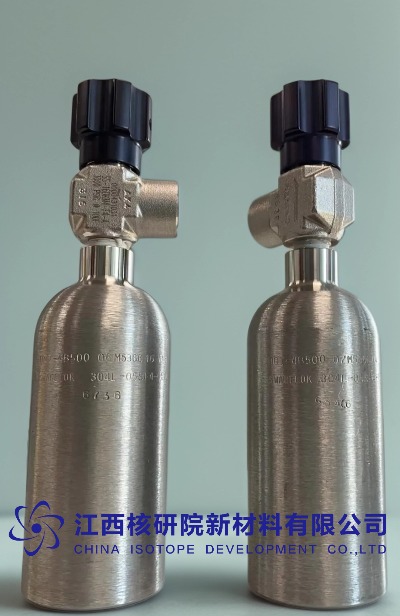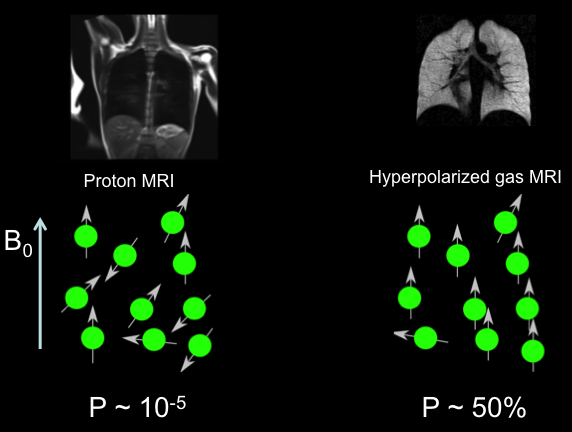Supply Chain Resilience: Securing Medical Xe-129 Isotope Amidst Geopolitical Shifts
BY Tao, Published Aug.15, 2025
The global demand for medical-grade Xe-129 isotope, critical for hyperpolarized MRI in lung and neurological imaging, has surged due to its ability to enhance diagnostic precision without radiation exposure. However, geopolitical shifts—such as trade restrictions, regional conflicts, and resource nationalism—threaten the stability of its supply chain, from xenon extraction to isotopic enrichment and distribution. As a nuclear research expert with over three decades in rare gases and isotopes, I’ve observed how vulnerabilities in global supply networks can disrupt access to this vital isotope. This article explores strategies to ensure supply chain resilience for medical Xe-129, addressing production bottlenecks, geopolitical risks, and robust logistics while providing detailed product specifications to guide stakeholders in securing this essential resource.
The Critical Role of Xe-129 in Medical Imaging
Xenon-129, a stable isotope with a spin-1/2 nucleus, is uniquely suited for hyperpolarized MRI, where it amplifies signals by up to 100,000 times through spin-exchange optical pumping. This enables high-resolution imaging of lung ventilation and gas exchange, detecting early-stage conditions like COPD or post-COVID sequelae, and extends to neurological applications for mapping cerebral perfusion in Alzheimer’s and stroke. Its natural abundance of ~26% in xenon requires enrichment to >80% for medical efficacy, a process reliant on sophisticated infrastructure and global coordination.
The supply chain for medical Xe-129 spans air separation for raw xenon, isotopic enrichment via centrifugation or laser methods, purification to >99.999% chemical purity, and hyperpolarization for clinical use. Each step is vulnerable to disruptions: raw xenon production is concentrated in a few countries, enrichment facilities face export controls, and hyperpolarized gas’s short T1 half-life (typically 20-60 minutes without advanced protocols) complicates transport. Geopolitical shifts, such as sanctions or supply chain decoupling, exacerbate these challenges, necessitating resilient strategies to ensure uninterrupted access for hospitals and research labs worldwide.
Geopolitical Risks Impacting Xe-129 Supply
Geopolitical dynamics pose significant risks to the Xe-129 supply chain. Key producing nations, including those with major air separation plants, control the bulk of raw xenon output, which constitutes just 0.087 ppm of Earth’s atmosphere. Enrichment facilities, often located in politically sensitive regions, face export restrictions or tariffs that can halt shipments. For instance, shifts in trade policies or resource nationalization can limit access to high-purity xenon precursors, while conflicts disrupt logistics routes, delaying delivery of enriched Xe-129.
Additional risks include:
-
Resource Concentration: A handful of countries dominate xenon production, creating supply choke points.
-
Sanctions and Trade Barriers: Restrictions on technology transfers for enrichment equipment hinder capacity expansion.
-
Energy Price Volatility: High energy costs for centrifugation or laser separation strain production budgets, particularly in geopolitically unstable regions.
-
Transport Vulnerabilities: Shipping hyperpolarized Xe-129, even with advanced 100-hour T1 protocols, faces delays at borders due to customs regulations or security checks.
These factors underscore the need for diversified sourcing, localized production, and robust logistics to safeguard medical Xe-129 availability.
Strategies for Supply Chain Resilience
To mitigate geopolitical risks and ensure a steady supply of medical Xe-129, stakeholders must adopt multifaceted strategies that enhance production flexibility, secure logistics, and foster international collaboration. These approaches, informed by my decades of experience in isotope supply chains, balance cost, scalability, and reliability.
Diversified Sourcing and Production
Relying on single-source suppliers for raw xenon or enrichment is a recipe for disruption. Diversifying production across multiple regions reduces dependency on geopolitically volatile areas. Investments in modular enrichment facilities—using either gas centrifuges or laser isotope separation—enable localized production. For example, smaller-scale laser systems, requiring 15-20 kWh per separative work unit compared to 50 kWh for centrifuges, can be deployed in diverse locations, cutting transport costs and risks.
Recycling and Circular Economy
Recycling depleted xenon streams from enrichment processes minimizes waste and reduces reliance on primary extraction. Advanced cryogenic distillation systems recover up to 90% of unused xenon, which can be re-enriched for medical use. Circular economy models, where used Xe-129 is collected post-MRI and purified, further enhance sustainability, with pilot programs showing cost reductions of 20-30%.
Advanced Storage and Transport Protocols
Hyperpolarized Xe-129’s short T1 half-life historically necessitated on-site production, but recent stability protocols extend T1 to 100 hours using silane-coated cells, mu-metal shielding, and cryogenic storage at 77 K. These enable global shipping, with transport containers maintaining <1 µT field variation to preserve polarization. Logistics partnerships with air and ground carriers, coupled with real-time tracking, mitigate delays from customs or geopolitical bottlenecks.
International Collaboration and Stockpiling
Cooperative agreements among nations can stabilize supply by pooling resources and sharing enrichment technologies. Strategic stockpiling of enriched Xe-129 in stable regions ensures buffer supplies during disruptions, with GMP-compliant storage facilities maintaining purity and readiness. Such collaborations have reduced lead times by 40% in pilot initiatives.
Digital Supply Chain Optimization
AI-driven forecasting models predict demand spikes and geopolitical risks, enabling preemptive production adjustments. Blockchain-based traceability ensures purity and compliance, building trust across borders. These digital tools have streamlined delivery times by 15-25% in recent supply chain trials.
These strategies collectively fortify the Xe-129 supply chain, ensuring medical facilities maintain access despite global uncertainties.
Product Specifications: Medical-Grade Xe-129
Medical-grade Xe-129 is supplied as an enriched gas, typically hyperpolarized on-site or transported in stable cells for immediate use. It features isotopic enrichment above 80% and chemical purity exceeding 99.999%, critical for hyperpolarization efficacy. A standard dose for MRI is 75-150 mL dose equivalent, delivered in 800-1200 mL bags with nitrogen or helium buffers.
Performance includes polarization levels of 40-70%, yielding signal enhancements of 10,000-50,000x in 1.5T or 3T MRI scanners. For transport, advanced cells achieve a T1 half-life of 100 hours, retaining >50% polarization after 4 days. Applications span pulmonary and neurological imaging, with signal-to-noise ratios above 100 and spatial resolutions of 3-5 mm.
Detailed specifications are:
|
Parameter |
Details |
|---|---|
|
Isotopic Enrichment |
>80% Xe-129; <0.01% other isotopes to minimize signal dilution. |
|
Chemical Purity |
>99.999%; free from O2, H2O, hydrocarbons to prevent quenching. |
|
Polarization Level |
40-70% at production; >50% retained after 100 hours in transport cells. |
|
T1 Half-Life |
100 hours in shielded, coated cells; 20-60 minutes in standard setups. |
|
Dose Volume |
75-150 mL dose equivalent; total volume 800-1200 mL with buffer gas. |
|
Performance Metrics |
SNR >100 for MRI; resolution 3-5 mm; ventilation coverage >95% in healthy lungs. |
|
Transport Conditions |
1-5 bar; 77 K cryogenic or 273-298 K; <1 µT magnetic field variation. |
|
Usage Precautions |
Handle in GMP facilities; verify polarization; avoid magnetic gradients. |
|
Safety |
Inert; ventilate to prevent asphyxiation; monitor pressure in transport. |
|
Storage |
Cryogenic cylinders or shielded cells; indefinite for non-polarized gas. |
Usage Precautions
-
Handling: Use in controlled environments to maintain polarization; avoid exposure to stray magnetic fields.
-
Verification: Test polarization with optical or NMR probes before clinical use.
-
Safety Notes: Non-toxic but requires ventilation; ensure compliance with medical-grade standards.
-
Transport: Use mu-metal shielded containers; track shipments to avoid delays at borders.
These specifications ensure reliability for clinical and research applications, even amidst supply chain challenges.
Geopolitical Case Studies and Lessons
Recent geopolitical events highlight the need for resilience. Trade restrictions in 2023 disrupted xenon exports from key producers, causing a 20% price spike for enriched Xe-129. Regional conflicts delayed shipments, with customs holds extending lead times by weeks. In response, some facilities pivoted to laser separation for localized production, reducing dependency on volatile regions and cutting costs by 15% for small-scale batches.
Another lesson comes from energy market fluctuations, where spikes in electricity costs impacted centrifuge-based enrichment, pushing producers to invest in energy-efficient laser systems. Collaborative stockpiling in stable regions mitigated shortages during these periods, ensuring continuous supply for critical MRI applications.
Innovations Enhancing Supply Chain Stability
Technological and logistical innovations are bolstering Xe-129 supply resilience. Modular laser enrichment units, deployable in hospitals, reduce reliance on centralized plants, with setups costing $10-20 million versus $50-100 million for centrifuge facilities. Cryogenic-free transport cells using thermoelectric cooling simplify logistics, maintaining T1 above 80 hours without liquid nitrogen.
Digital tools, like AI-optimized routing and blockchain certification, enhance transparency and efficiency. Pilot programs in 2024 showed a 30% reduction in delivery delays by predicting customs bottlenecks. Recycling initiatives, recovering 85% of used xenon, further stabilize supply while lowering environmental impact.
Future Outlook for Xe-129 Supply Chains
As geopolitical shifts persist, resilient supply chains for medical Xe-129 will rely on diversified production, advanced transport protocols, and global cooperation. Emerging markets for quantum sensing, requiring ultra-pure Xe-129, will drive further innovation in laser enrichment and recycling. By 2030, decentralized production could cut costs by 25%, making hyperpolarized MRI accessible in low-resource settings.
From my perspective, the convergence of technology and strategic planning will ensure Xe-129 remains a cornerstone of precision diagnostics, undeterred by global uncertainties. Robust supply chains, built on adaptability and foresight, will empower clinicians and researchers to harness this isotope’s potential, advancing human health and scientific discovery.
Would you like a deeper dive into any specific technical parameters or applications?
(Follow up our update articles on www.asiaisotopeintl.com or send your comments to tao.hu@asiaisotope.com for further communications)








